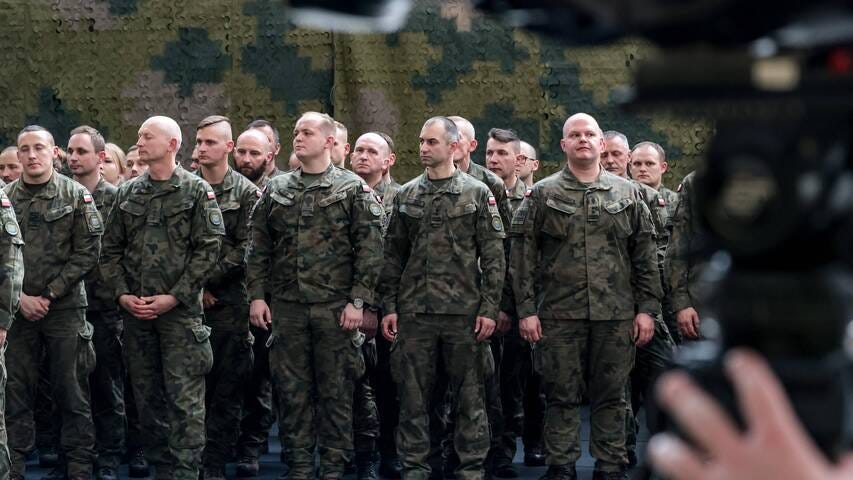Military Spending Soars While Europe Rebuilds Its Defense Capabilities
For the tenth consecutive year, defense spending has increased, driven by Europe and the Middle East. The EU, aiming to reduce its reliance on the U.S., is expected to continue this trend.

It marks the sharpest increase in global military spending since the end of the Cold War. According to a report by the Stockholm International Peace Research Institute (SIPRI), defense expenditures reached $2.718 trillion in 2024, a 9.4% rise compared to 2023. Over the past decade, governments have consistently increased their investment in defense.
While the United States and China remain by far the biggest military spenders — accounting for 37% and 12% of global expenditures respectively — this surge is largely driven by growing investments in Europe and the Middle East, two regions currently grappling with the wars in Ukraine and Gaza. Across Europe, including Russia, total military spending reached $693 billion, an 83% increase compared to 2015.
The effects of Russia’s invasion of Ukraine are particularly visible in countries concerned about the Russian threat. In Poland, defense spending soared by 31% in 2024, reaching $38 billion, or 4.2% of the country’s GDP. Sweden, having joined NATO in March 2024, allocated 2% of its GDP to defense, amounting to $12 billion — a 34% increase. Germany, which now ranks as Europe’s leading spender after Russia (whose military budget stands at $149 billion), recorded a 28% rise to reach $88.5 billion. This is a significant shift, given Germany’s historical context, positioning it as the fourth-largest military spender worldwide (up from seventh place in 2023).
A First Step for Europe
These budget increases often come at the expense of investment in other areas, SIPRI also points out. And this trend shows no sign of reversing anytime soon. Amid growing uncertainty regarding American support for its allies, the European Union announced a defense plan worth several hundred billion euros in early March. Although the introduction of new American tariffs somewhat overshadowed this development, the 27 member states have continued their efforts.
On April 24, the European Parliament approved a project to strengthen the European Defence Industry Programme (EDIP). Among other measures, lawmakers proposed the introduction of a "European purchasing principle," meaning the plan would only finance acquisitions where at least 70% of the final product’s estimated value stems from components made in the EU or associated countries. With a budget of €1.5 billion, the project still requires approval from the member states.
Tensions Over Language and Approach
Unsurprisingly, these efforts have sparked controversy and friction. In early March, the European Commission unveiled its "ReArm Europe" program, which was quickly renamed "Readiness 2030" at the request of countries like Spain and Italy, who favored a less militaristic name and stressed that the initiative should not be reduced to arms procurement alone.
This broader plan aims to mobilize €800 billion to fund European defense, including €150 billion in loans granted by the EU. It was launched under Article 122 of the Treaty on the Functioning of the European Union, which allows bypassing a parliamentary vote in cases of emergency — a move that drew criticism from several members of Parliament.
During the EDIP vote, the French weekly Le Point highlighted the opposition of Italian deputies from Giorgia Meloni’s party, Fratelli d’Italia, to the adoption of the report and the opening of negotiations at the European Council level. Meloni, who maintains close ties with Donald Trump, has repeatedly stressed that building a European defense capability should not come at the expense of NATO or in opposition to the United States. Italy, after all, hosts the second-largest contingent of U.S. troops in Europe, after Germany.
Significant Economic Fallout
Yet ironically, the Italian defense giant Leonardo could be one of the primary beneficiaries of Europe’s growing military ambitions. Since the start of the year, Leonardo’s market value has soared by 70%. In 2024, the company’s new orders reached €20.9 billion, a 16.3% increase. The economic windfall from this new defense policy could be considerable. Speaking to Handelsblatt, Armin Papperger, CEO of the German group Rheinmetall, predicted that his company's order book could swell to €300 billion over the next five years.
However, the benefits are not yet evenly felt. On April 24, shares in the French defense company Thales dropped 5% at market opening, despite reporting rising revenues in the first quarter. The group, however, recorded a decline in new orders. In the face of such high stakes, countries may be tempted to prioritize their own interests. Moreover, this rearmament trend is not confined to Europe alone. On Monday, April 28, France announced it had finalized a deal with India to sell 26 Rafale fighter jets, manufactured by Dassault — adding to the 36 jets India already owns — for a total of $7.4 billion.



